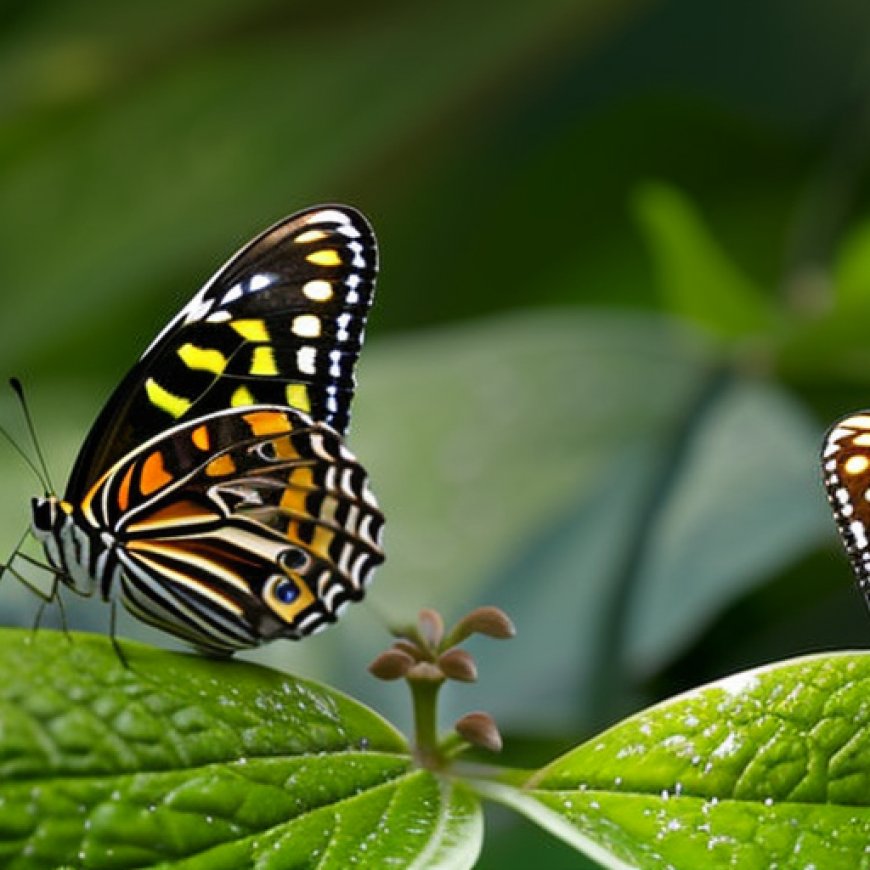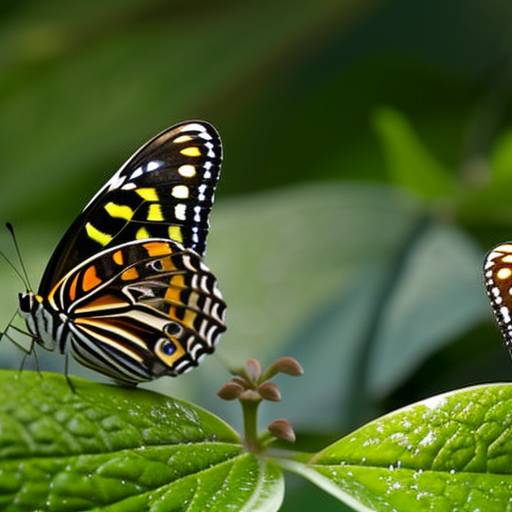Three Brazilian Butterflies Proposed for U.S. Endangered Species Protection
Three Brazilian Butterflies Proposed for U.S. Endangered Species ... Center for Biological Diversity


U.S. Fish and Wildlife Service Proposes Endangered Species Act Protection for Brazilian Butterflies

WASHINGTON— The U.S. Fish and Wildlife Service proposed protecting three Brazilian butterflies under the Endangered Species Act today. The proposed protections respond to a legal agreement stemming from a Center for Biological Diversity lawsuit filed in 2021.
All three butterflies face serious threats, including habitat destruction and collection for international trade.
“These stunning swallowtails need a lifeline after decades of nonstop threats to their existence,” said Dianne DuBois, a staff scientist at the Center for Biological Diversity. “We’re relieved the U.S. has finally proposed the highest level of Endangered Species Act protection for these three beleaguered species.”
In 1994 a biologist petitioned the Service to list seven butterflies, including these three species, under the Endangered Species Act. The Service determined that their listing might be warranted but, despite the swallowtails being highly imperiled, the species sat on the agency’s candidate waitlist for almost 30 years.
The settlement prompting today’s proposal set Endangered Species Act listing proposal deadlines for the Fluminense swallowtail, Harris’ mimic swallowtail, and five other foreign bird and butterfly species.
“Protections are always better late than never, but we’ve known humans have been threatening these butterflies’ survival for more than three decades,” said DuBois. “The United States must act faster to protect wildlife so we have a fighting chance of preserving the biodiversity we have left.”
Dozens of other foreign species currently await decisions by the Service. Despite 1 million species being on track for extinction in the current biodiversity crisis, the Fish and Wildlife Service has protected only one foreign species so far in 2023.
More than 600 foreign species are listed under the U.S. Endangered Species Act. The Act protects foreign endangered species by banning their import and sale, increasing awareness, and providing financial assistance.
Sustainable Development Goals (SDGs)
- Goal 15: Life on Land
Species Backgrounds
- Harris’ mimic swallowtail: This mostly black butterfly has beautiful white and rose-red markings. It only inhabits Brazil’s coastal Atlantic forest region and is threatened by habitat destruction and collection for international trade. It is listed as critically endangered on the Brazilian National Red List.
- Hahnel’s Amazonian swallowtail: This butterfly is restricted to just three areas of sandy riverbank along tributaries of the Amazon in central Brazil and is threatened by overcollection.
- Fluminense swallowtail: This white-and-black butterfly with red accents is considered locally extinct in some areas and continues to decline, primarily due to development of its tiny swamp habitat near Rio de Janeiro. The species has also been found in the insect curio trade.
SDGs, Targets, and Indicators
| SDGs | Targets | Indicators |
|---|---|---|
| SDG 15: Life on Land | Target 15.5: Take urgent and significant action to reduce the degradation of natural habitats, halt the loss of biodiversity, and protect and prevent the extinction of threatened species | Indicator 15.5.1: Red List Index |
| SDG 12: Responsible Consumption and Production | Target 12.4: By 2020, achieve the environmentally sound management of chemicals and all wastes throughout their life cycle, in accordance with agreed international frameworks, and significantly reduce their release to air, water, and soil in order to minimize their adverse impacts on human health and the environment | Indicator 12.4.1: Number of parties to international multilateral environmental agreements on hazardous waste, including their compliance with the agreements |
1. Which SDGs are addressed or connected to the issues highlighted in the article?
SDG 15: Life on Land
The article discusses the proposed protection of three Brazilian butterflies under the Endangered Species Act. This aligns with SDG 15, which aims to protect and prevent the extinction of threatened species and halt the loss of biodiversity.
SDG 12: Responsible Consumption and Production
The article mentions that one of the threats to the butterflies is collection for international trade. This relates to SDG 12, which promotes responsible consumption and production to minimize the adverse impacts on human health and the environment.
2. What specific targets under those SDGs can be identified based on the article’s content?
Target 15.5: Take urgent and significant action to reduce the degradation of natural habitats, halt the loss of biodiversity, and protect and prevent the extinction of threatened species
The proposed protection of the Brazilian butterflies under the Endangered Species Act aligns with this target, as it aims to prevent their extinction and protect them from habitat destruction.
Target 12.4: By 2020, achieve the environmentally sound management of chemicals and all wastes throughout their life cycle, in accordance with agreed international frameworks, and significantly reduce their release to air, water, and soil in order to minimize their adverse impacts on human health and the environment
The mention of collection for international trade as a threat to the butterflies relates to this target, as it highlights the need for responsible consumption and production practices to minimize the adverse impacts on the environment.
3. Are there any indicators mentioned or implied in the article that can be used to measure progress towards the identified targets?
Indicator 15.5.1: Red List Index
The article does not explicitly mention this indicator, but it is relevant to measure progress towards Target 15.5. The Red List Index assesses changes in the extinction risk of species over time and provides a comprehensive indicator of the status of global biodiversity.
Indicator 12.4.1: Number of parties to international multilateral environmental agreements on hazardous waste, including their compliance with the agreements
The article does not mention this indicator, but it is relevant to measure progress towards Target 12.4. It assesses the number of parties to international agreements on hazardous waste and their compliance with those agreements, indicating progress in achieving environmentally sound management of chemicals and wastes.
4. SDGs, Targets, and Indicators
| SDGs | Targets | Indicators |
|---|---|---|
| SDG 15: Life on Land | Target 15.5: Take urgent and significant action to reduce the degradation of natural habitats, halt the loss of biodiversity, and protect and prevent the extinction of threatened species | Indicator 15.5.1: Red List Index |
| SDG 12: Responsible Consumption and Production | Target 12.4: By 2020, achieve the environmentally sound management of chemicals and all wastes throughout their life cycle, in accordance with agreed international frameworks, and significantly reduce their release to air, water, and soil in order to minimize their adverse impacts on human health and the environment | Indicator 12.4.1: Number of parties to international multilateral environmental agreements on hazardous waste, including their compliance with the agreements |
Behold! This splendid article springs forth from the wellspring of knowledge, shaped by a wondrous proprietary AI technology that delved into a vast ocean of data, illuminating the path towards the Sustainable Development Goals. Remember that all rights are reserved by SDG Investors LLC, empowering us to champion progress together.
Source: biologicaldiversity.org

Join us, as fellow seekers of change, on a transformative journey at https://sdgtalks.ai/welcome, where you can become a member and actively contribute to shaping a brighter future.







